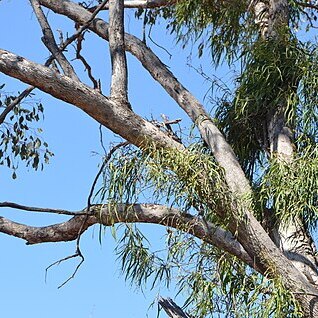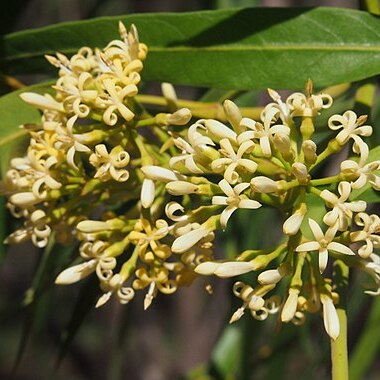Tall climber, climbing by clinging roots when young, with twining stems when older; latex clear. Juvenile leaves ovate-cordate, 2–5 cm long. Adult leaves moderately thin, firm-textured; petiole 8–30 mm long, pubescent; lamina linear to narrowly lanceolate, 8–24 cm long, 0.5–2 cm wide, 7–18 times as long as wide, gradually attenuate at base and apex, dull green and glabrous or minutely pubescent on upper surface, paler and minutely pubescent below; secondary veins distinct; fine net veins not visible. Inflorescence of axillary and terminal, many-flowered panicles; axes shortly pubescent; pedicels 2–7 mm long. Calyx lobes ovate, c. 1.2 mm long, appressed, pubescent outside. Corolla yellow; tube very short; lobes strongly revolute, linear, c. 8 mm long, 5–7 times as long as tube, hairy internally towards base and near tip. Anther cone c. 2.7 mm long, long-exserted; filaments 4–5 mm long, spirally twisted; anther tails convergent. Nectary scales free, narrow, c. 0.4 mm long, acute. Capsules ovoid, 5–6 cm long, 1–2 cm diam., pubescent.
More
A woody climber that attaches to the trunks of trees. It can also scramble over the ground. Young growth is soft and hairy. The stems are soft but become woody. The leaves are thick textured. They are sword shaped. They are 8-30 cm long by 0.5-2 cm wide. They are smooth and yellowish-green above but paler and hairy underneath. The flowers are pale. They occur as many together in clusters in the axils of leaves. The fruit are blunt follicles. These are 8 cm long by 1-2 cm wide.


